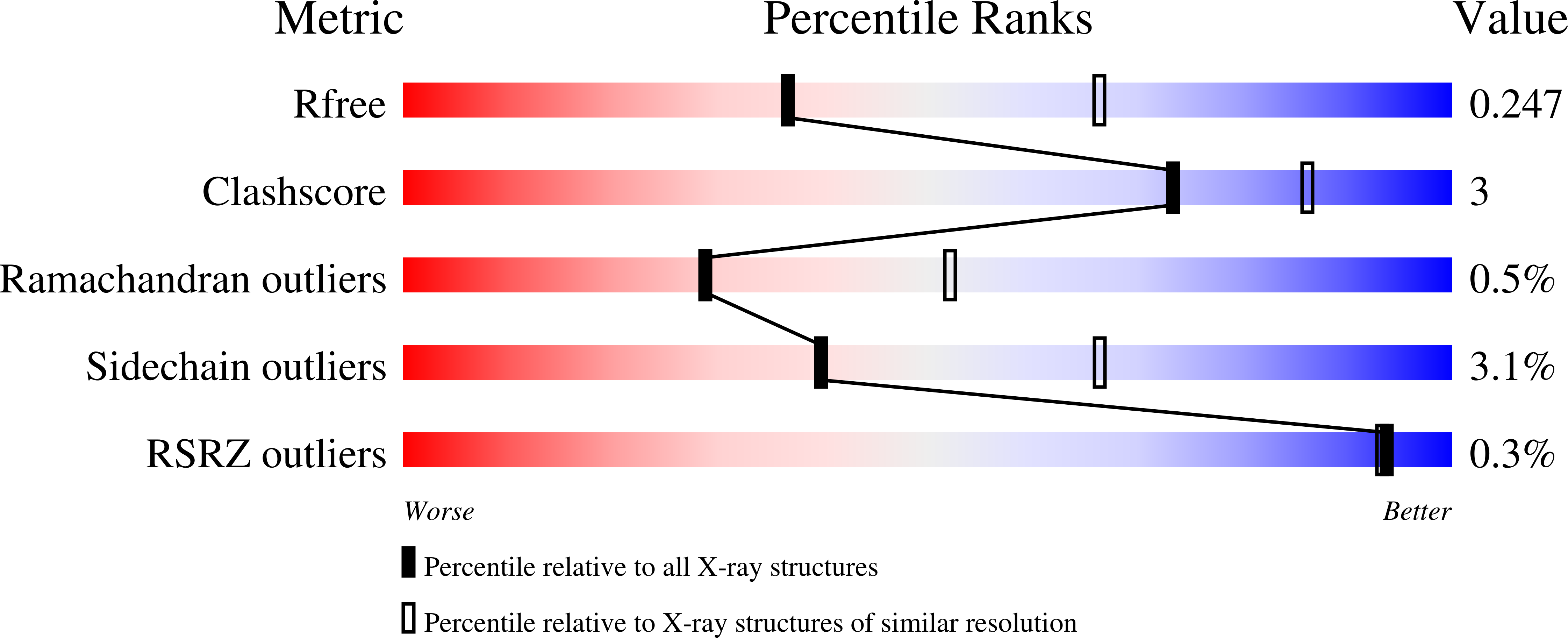Conformational flexibility related to enzyme activity: evidence for a dynamic active-site gatekeeper function of Tyr(215) in Aerococcus viridans lactate oxidase.
Stoisser, T., Brunsteiner, M., Wilson, D.K., Nidetzky, B.(2016) Sci Rep 6: 27892-27892
- PubMed: 27302031
- DOI: https://doi.org/10.1038/srep27892
- Primary Citation of Related Structures:
5EBU - PubMed Abstract:
L-Lactate oxidase (LOX) belongs to a large family of flavoenzymes that catalyze oxidation of α-hydroxy acids. How in these enzymes the protein structure controls reactivity presents an important but elusive problem. LOX contains a prominent tyrosine in the substrate binding pocket (Tyr(215) in Aerococcus viridans LOX) that is partially responsible for securing a flexible loop which sequesters the active site. To characterize the role of Tyr(215), effects of substitutions of the tyrosine (Y215F, Y215H) were analyzed kinetically, crystallographically and by molecular dynamics simulations. Enzyme variants showed slowed flavin reduction and oxidation by up to 33-fold. Pyruvate release was also decelerated and in Y215F, it was the slowest step overall. A 2.6-Å crystal structure of Y215F in complex with pyruvate shows the hydrogen bond between the phenolic hydroxyl and the keto oxygen in pyruvate is replaced with a potentially stronger hydrophobic interaction between the phenylalanine and the methyl group of pyruvate. Residues 200 through 215 or 216 appear to be disordered in two of the eight monomers in the asymmetric unit suggesting that they function as a lid controlling substrate entry and product exit from the active site. Substitutions of Tyr(215) can thus lead to a kinetic bottleneck in product release.
Organizational Affiliation:
Research Center Pharmaceutical Engineering, Inffeldgasse 13, A-8010 Graz, Austria.
















